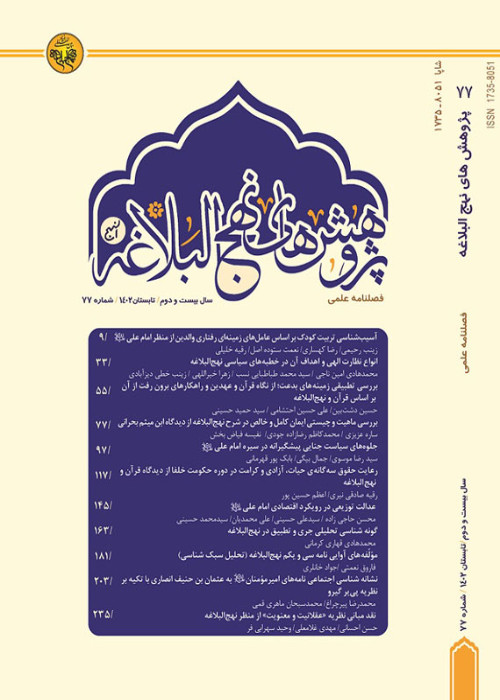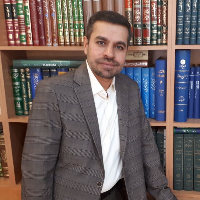Initiation of Creation in Nahj Al-Balaghah: Origins; Dating
This study aims to determine which element or elements, according to Nahj al-Balaghah, are involved in the creation of the universe and their historical origin. The dating method of narrations in this article is to search for the questions that narrations arise and evolve in response to them. In Qur'an, various discussions are available about the creation of "heavens and earth", the inauguration of creation by God, the rain, and the vitality of nature and the like. Still, the primary Muslims did not offer a cosmological interpretation of such verses. At the same time, since the first century AH, the two verses of Hood: 7 and Foselat: 11, received more attention, as they have mentioned about the "Throne of God", "water", "heaven" and "smoke". The Sunni narrations of the Prophet (PBUH) indicate two points: God is above the throne and the heavens, and from there, He surrounds the universe scientifically, and the "pen" is the first creature. In the commentaries attributed to the companions' elements such as "wind", "smoke" and "cloud", an attempt has been made to offer a kind of cosmological interpretation of creation, which these narrations have been called "Israelites" in later periods. However, these narrations have nothing to do with the issue of the elemental creation. They only indicate the beliefs of the people of that time regarding Qur'anic interpretations such as "the position of the house", "the passage of the earth", "fish" and "rock". In the third century, this issue is related to the theological differences between the Hadithists and the Mu'tazilites on the issue of literalism or interpretation. In Shiite hadith sources, both material phenomena and spiritual concepts such as the first creature have been mentioned. The dominant opinion emphasizes the importance of material elements in creation, especially "water". Nahj al-Balaghah provides a relatively detailed interpretation of creation; Seyyed Razi has used both Shiite and historical sources, especially Murūj aḏ-Ḏahab, in quoting narrations attributed to the Amir al-Mu'minin. Late Muslim thinkers, influenced by the view of Thales Malati, who considered the origin of phenomena to be water, emphasized the role of water in creation. However, other beliefs of Greek philosophers, especially Neoplatonic philosophy, also gained support, and some, for example, interpreted water as the reason.
- حق عضویت دریافتی صرف حمایت از نشریات عضو و نگهداری، تکمیل و توسعه مگیران میشود.
- پرداخت حق اشتراک و دانلود مقالات اجازه بازنشر آن در سایر رسانههای چاپی و دیجیتال را به کاربر نمیدهد.



